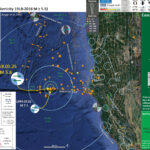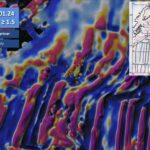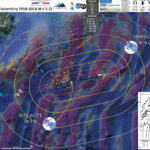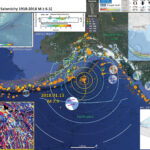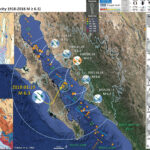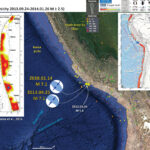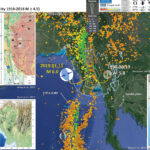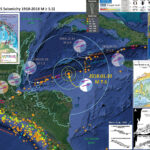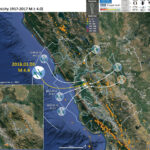Good Morning Humboldt County! I was in bed checking up on social media stuff and I checked my email. There were two emails from USGS ENS showing a M 5.0 near me. I had not felt it and when I…
Earthquake Report: Gulf of Alaska UPDATE #2
UPDATES Below is a list of all the reports associated with this earthquake sequence. Original Report Report Update #1 Report Update #2 I thought it would be interesting to see the seismicity with time. Perhaps this could help us learn…
Earthquake Report: Gulf of Alaska UPDATE #1
Well. What a firestorm of social media discusions about this earthquake. It seems that, like how we learn so much when earthquakes like this happen, the amount of interacting in public on social media has been growing earthquake by earthquake.…
Earthquake Report: Gulf of Alaska!
I was asleep in bed, trying to catch up to prevent myself from getting ill, when there was a large earthquake in the Gulf of Alaska (GA), offshore of Kodiak, Alaska. When I wakened, I noticed a fb message from…
Earthquake Report: Gulf of California
Today we had an earthquake with magnitude M 6.3 in the Gulf of California (GOC). The GOC is formed by transtension (extension along a strike-slip fault system) along the North-America-Pacific plate boundary. Transtension happens when the plate motion across a…
Earthquake Report: Peru Update #1
Well, I missed looking further into a key update paper and used figures from an older paper on my interpretive poster yesterday. Thanks to Stéphane Baize for pointing this out! Turns out, after their new analyses, the M 7.1 earthquake…
Earthquake Report: Peru
We had a damaging and (sadly) deadly earthquake in southern Peru in the last 24 hours. This is an earthquake, with magnitude M 7.1, that is associated with the subduction zone forming the Peru-Chile trench (PCT). The Nazca plate (NP)…
Earthquake Report: Burma!
There was an earthquake in Burma today! The epicenter plotted very close to the Sagaing fault (SF), a major dextral (right-lateral) strike-slip fault system, part of the plate boundary between the India and Eurasia plates. This fault system accommodates much…
Earthquake Report: Cayman Trough!
Just a couple hours ago there was an earthquake along the Swan fault, which is the transform plate boundary between the North America and Caribbean plates. The Cayman trough (CT) is a region of oceanic crust, formed at the Mid-Cayman…
Earthquake Report: Berkeley, CA (Hayward fault)
There was an earthquake last night (local time) in Berkeley, aligned with the Hayward fault. The Hayward fault is one of the synthetic sister faults to the San Andreas fault, the major player in the dextral (right-lateral, strike-slip) plate boundary…

